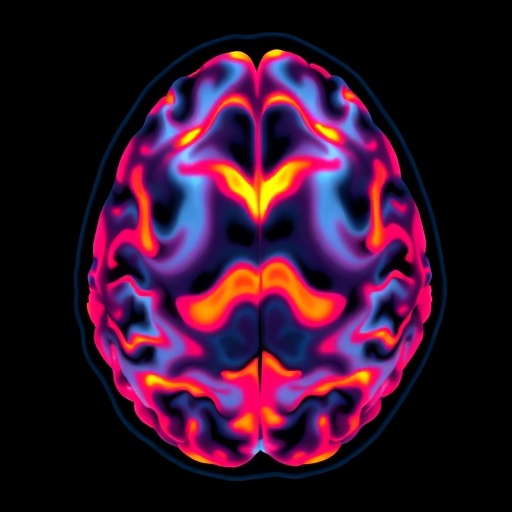Researchers are continually seeking innovative solutions to complex medical challenges, and brain tumor segmentation represents one of the most critical areas where advanced technology can make a profound difference. The recent study published by Adib, Amirmazlaghani, and Rahmati introduces a cutting-edge 3D densely connected Convolutional Neural Network (CNN) that leverages multi-scale receptive fields and hybrid loss functions. This pioneering research is poised to change the landscape of medical imaging, particularly in the effective identification and delineation of brain tumors, which historically has posed significant challenges within the domain of radiology.
The primary aim of this study was to enhance the process of brain tumor segmentation, an essential task that directly influences treatment planning and prognostic outcomes for patients. Tumor segmentation involves accurately defining the boundaries of tumors within MRI images, a task complicated by variations in shape, size, and texture of tumors. With the incorporation of deep learning techniques, specifically 3D CNNs, the researchers have developed a model that exhibits remarkable precision and scalability, capable of handling volumetric data typically found in medical imaging.
By employing a densely connected architecture, this CNN optimizes feature propagation and reusability across multiple layers. Such a strategy minimizes the risk of vanishing gradients, which is a common challenge in deep network architectures. The dense connectivity allows for a more efficient information flow, enabling the network to learn more complex patterns pertinent to tumor characteristics without the need for excessively deep structures that can lead to inefficiency.
Moreover, the use of multi-scale receptive fields enhances the model’s ability to capture contextual information at various resolutions. This aspect is particularly valuable for brain tumor segmentation, as tumors can exhibit different features across varying scales. By combining multiple scales, the CNN can ascertain critical details that may otherwise be overlooked if analyzed at a single resolution. The ability to effectively integrate multi-scale information directly contributes to improved segmentation accuracy, which is paramount in clinical applications.
Additionally, the researchers introduce hybrid loss functions, a novel approach aimed at refining the training process of the network. Traditional loss functions may not fully capture the intricacies of medical image segmentation, often leading to suboptimal performance. By utilizing a hybrid loss that combines various loss types, the researchers effectively bolster the model’s learning capacity. This hybrid approach ensures that the network emphasizes the most critical aspects of the tumor while minimizing false positives and negatives, thereby enhancing overall reliability.
The approach demonstrated in this study reflects the growing trend towards using artificial intelligence and machine learning to facilitate healthcare advancements. As diagnostic imaging becomes increasingly reliant on these technologies, the potential benefits for patients could be substantial. Greater accuracy and efficiency in tumor identification can lead to personalized treatment strategies, more effective monitoring of disease progression, and better overall outcomes.
This study’s implications extend beyond mere academic interest, hinting at a future where AI-driven tools assist healthcare professionals in making more informed, data-driven decisions regarding patient care. The seamless integration of such technologies into clinical workflows could help in alleviating some of the burdens faced by radiologists today, who often contend with overwhelming workloads and the challenge of interpreting complex imaging data efficiently.
As with any technological advancement, the implementation of this 3D densely connected CNN into clinical practice will require thorough validation and testing. Future studies will need to assess the model’s performance across diverse populations and imaging protocols to ensure that it achieves consistent results. If successful, this innovative approach could lay the groundwork for widespread adoption in the field of medical imaging, ultimately transforming how brain tumors are detected and treated.
The significance of this research resonates well within the scientific community, as it opens doors to new avenues for improving diagnostic processes. Moreover, it demonstrates the importance of interdisciplinary collaboration between computer scientists, medical professionals, and researchers dedicated to enhancing patient care through technological advancements. As the field of medical imaging continues to evolve, the findings from this study may stimulate further research aimed at refining AI applications in healthcare.
In conclusion, the introduction of a 3D densely connected CNN structure with multi-scale receptive fields and hybrid loss functions represents a significant leap forward in brain tumor segmentation capabilities. The study authored by Adib, Amirmazlaghani, and Rahmati exemplifies the potential for AI to revolutionize the healthcare landscape by providing tools that not only enhance diagnostic accuracy but also ultimately lead to better patient outcomes. As this research garners attention, it paves the way for future innovations that marry technology and medicine for the greater good.
With these advancements in neural networks and deep learning paradigms, the next decade could witness even more sophisticated applications of AI in various medical domains. These remarkable developments may soon allow for real-time tumor tracking and adaptive therapeutic strategies. The race against brain tumors and other malignancies is relentless, and with AI by their side, healthcare practitioners are better equipped than ever to face these daunting challenges head-on.
Subject of Research: Brain tumor segmentation using 3D densely connected CNNs.
Article Title: 3D densely connected CNN with multi-scale receptive fields and hybrid loss for brain tumor segmentation.
Article References:
Adib, F., Amirmazlaghani, M. & Rahmati, M. 3D densely connected CNN with multi-scale receptive fields and hybrid loss for brain tumor segmentation.
Discov Artif Intell 5, 213 (2025). https://doi.org/10.1007/s44163-025-00279-9
Image Credits: AI Generated
DOI: 10.1007/s44163-025-00279-9
Keywords: brain tumor segmentation, 3D CNN, deep learning, multi-scale receptive fields, hybrid loss functions.




